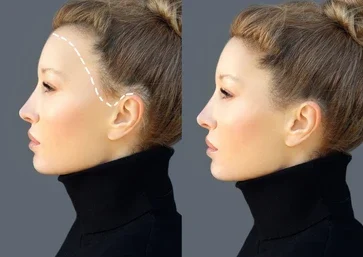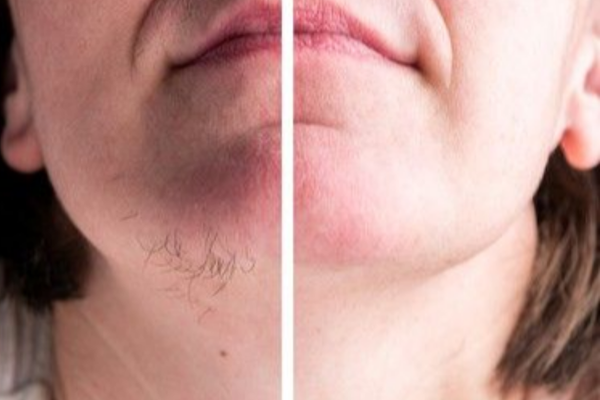
Alopecia Areata
Male Patterned Alopecia and Female Patterned Alopecia
Alopecia areata is an autoimmune disorder characterized by sudden hair loss in round patches on the scalp and other areas of the body. It affects millions of people worldwide and can lead to significant emotional and psychological distress. Male and female patterned alopecia, also known as androgenetic alopecia, is the most common form of hair loss in both men and women, characterized by a distinct pattern of thinning hair.
Types of Alopecia
- Alopecia Areata: This condition causes hair loss in round patches on the scalp and other body parts. It can progress to complete scalp hair loss (alopecia totalis) or entire body hair loss (alopecia universalis).
- Male Patterned Alopecia: Also known as male pattern baldness, it typically begins with a receding hairline and thinning at the crown, leading to partial or complete baldness.
- Female Patterned Alopecia: This type of hair loss usually presents as diffuse thinning over the crown and widening of the part, but rarely leads to complete baldness.
Possible Causes of Alopecia
- Genetics: Androgenetic alopecia in both men and women is largely hereditary. If a close family member has experienced hair loss, there’s a higher likelihood of developing it.
- Hormonal Changes: In male and female patterned alopecia, androgens play a significant role. Hormonal changes due to pregnancy, menopause, or endocrine disorders can also trigger hair loss.
- Immune System Dysfunction: Alopecia areata is an autoimmune disorder where the immune system mistakenly attacks hair follicles, leading to hair loss.
- Stress: Both physical and emotional stress can trigger or exacerbate alopecia areata and androgenetic alopecia.
- Medical Conditions: Conditions such as thyroid disease, anemia, and polycystic ovary syndrome (PCOS) can contribute to hair loss.
- Medications: Certain medications, including chemotherapy drugs, blood thinners, and beta-blockers, can cause hair loss as a side effect.
- Diet and Nutrition: Deficiencies in vitamins and minerals, particularly iron, vitamin D, and zinc, can contribute to hair loss.

Symptoms and Diagnosis
- Alopecia Areata: Sudden hair loss in round or oval patches, which can be smooth or slightly red. In some cases, nail changes such as pitting or ridges may occur.
- Male Patterned Alopecia: Gradual thinning at the crown and a receding hairline forming an “M” shape. Over time, the hairline continues to recede, and the bald spot at the crown enlarges.
- Female Patterned Alopecia: Diffuse thinning over the top of the scalp with the preservation of the frontal hairline. A widening part is a typical sign.
Why Choose DermaLinks for Consultation ?
- Accurate Diagnosis: Dermatologists at DermaLinks can diagnose the type of alopecia through clinical examination, scalp biopsy, and blood tests to rule out underlying conditions.
- Tailored Treatment Plans: Dermatologists can develop individualized treatment plans based on the type and severity of hair loss and the patient’s overall health. Common treatments for Alopecia may include Medications, procedures, lifestyle modifications, home care.
- Access to Effective Treatments: Dermatologists can prescribe effective treatments that are not available over the counter, including topical and oral medications, and advanced therapies.
- Monitoring and Managing Side Effects: Continuous monitoring by a dermatologist ensures that treatments are effective and side effects are managed promptly and preventive measures can delay the worsening.
- Psychological Support: Hair loss can lead to significant emotional distress. Dermatologists can provide support and referrals to mental health professionals if necessary.
Need Any Help
Request A Consultation And Price Estimate

Hirsutism / Unwanted Hair Growth
Hirsutism is a condition characterized by excessive, male-pattern hair growth in women, particularly on the face, chest, and back. It is often a source of distress and can impact self-esteem and quality of life. Understanding the causes and effective treatments for hirsutism is essential for managing this condition.
Possible Causes of Hirsutism
- Hormonal Imbalances: Elevated levels of androgens (male hormones) can lead to excessive hair growth. Conditions like polycystic ovary syndrome (PCOS) are common causes.
- Genetics: Family history can influence the likelihood of developing hirsutism.
- Medications: Certain medications, such as anabolic steroids or medications containing androgens, can cause hirsutism.
- Adrenal Gland Disorders: Conditions affecting the adrenal glands, such as Cushing’s syndrome, can lead to increased androgen production.

Symptoms and Diagnosis
- Symptoms:
- Excess Hair Growth: Thick, dark hair in areas where men typically grow hair, such as the face, chest, and back.
- Menstrual Irregularities: Irregular periods or absence of menstruation, often associated with underlying hormonal imbalances.
- Acne and Oily Skin: Common in conditions like PCOS.
- Diagnosis: Dermatologists diagnose hirsutism through a physical examination, medical history review, and tests to measure hormone levels. Imaging tests, such as ultrasound, may be used to assess the ovaries and adrenal glands.
Importance of Visiting DermaLinks
- Accurate Diagnosis: Dermatologists can identify the underlying causes of hirsutism, ensuring appropriate treatment.
- Comprehensive Treatment Plans: Dermatologists can develop individualized treatment plans based on the patient’s specific condition and preferences which may include Laser Hair Reduction with US FDA Approved latest technology, Medications and Lifestyle modifications.
- Access to Advanced Treatments: Dermatologists can provide access to advanced treatments, such as laser hair removal and hormonal therapies.
- Guidance on Skincare: Dermatologists can offer advice on managing skin issues associated with hirsutism, such as acne.
Hirsutism is a condition characterized by excessive hair growth due to hormonal imbalances, genetics, or medications. Understanding its causes and effective treatments is essential for managing symptoms and improving quality of life. Visiting a dermatologist ensures accurate diagnosis, personalized treatment plans, and access to advanced treatments. With ongoing research and advancements in hair removal and hormonal therapies, the future holds promise for improved management of hirsutism.


